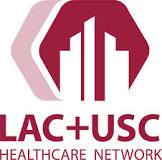CCR5 Inhibitor Treatment Intensification on CD4+ T-cell Recovery
| Status: | Archived |
|---|---|
| Conditions: | HIV / AIDS |
| Therapuetic Areas: | Immunology / Infectious Diseases |
| Healthy: | No |
| Age Range: | Any |
| Updated: | 7/1/2011 |
| Start Date: | June 2009 |
| End Date: | July 2011 |
The Impact of CCR5 Inhibitor Treatment Intensification on CD4+ T-cell Recovery and Gene Expression Profiles in HIV-Infected Patients With Viral Suppression
CCTG 590 is a open-label study to evaluate the impact of therapy intensification with
Maraviroc (MVC) (a CCR5 inhibitor) to a stable suppressive HIV antiretroviral regimen on the
rate of CD4+ T-cell recovery and gene expression profiles. Patients on a stable first-line
HIV regimen with continued viral suppression and sub-optimal CD4+ T-cell counts will be
eligible for this study. Those who are found to be eligible will have MVC (dose-adjusted to
background HIV regimen) added to their current HIV regimen for 24 weeks. After the 24 week
intensification, the MVC will be discontinued, the original antiretroviral regimen will be
continued and the subjects will be followed for an additional 12 weeks.
The investigators hypothesize that MVC will improve the rate of CD4 recovery. This improved
CD4 recovery will be associated with favorable changes in gene expression profiles of genes
involved with CD4 maintenance and circulation.
Blunted CD4+ T-cell responses during viral control may be a consequence of on-going T-cell
destruction in the regenerative phase of CD4 recovery from activation-induced apoptosis
and/or reduced production from decreased thymic output. Maraviroc, a CCR5 inhibitor, may
improve the clinical status of HIV-infected by two distinct mechanisms. First, by blocking
HIV entry into CD4+ T-cells, CCR5 inhibitors have direct antiviral activity. Second, as the
pro-inflammatory state of HIV infection up-regulates CCR5 ligands and receptors, this CCR5
receptor antagonist may abrogate immune activation and resultant T-cell apoptosis.
Importantly, MVC binds CCR5 receptors without inducing intracellular signaling or altering
cell-surface expression. Potentially, MVC intensification during viral suppression with ART
may further decrease persistent activation-induced apoptosis and improve repair and
remodeling of lymphoid tissue leading to increased CD4+ T-cell recovery and function.
The aim of this study is to evaluate a potentially therapeutic immunomodulatory effect of
MVC. Several measures of immune homeostasis will be determined in this study, including
functional genomic analysis and extended T-cell phenotyping. Genes responsive to MVC therapy
will be identified and categorized into functional groups. Based upon existing literature of
the identified genes and observed immune responses (change in CD4/CD8 subsets) during MVC
therapy, a model of CCR5 responsive-genes and potential impact on immune recovery will be
outlined. Potentially, individuals experiencing immune discordance during suppressive ART
may be better treated by MVC antiretroviral intensification.
1. We hypothesize that expression will decrease among genes involved in immune activation
(NF-kB, MAPK, nuclear factor of activated T-cells, MYD88 and STAT1), apoptosis (Fas ligand
and TRAIL) and trafficking/repopulation of T-cells (CCR5, MIP-1α, MIP-1β and RANTES) and
increase among genes involved in tissue repair (platelet-derived growth factor, insulin-like
growth proteins and osteoblast-specific transcription factor).
1. The gene expression profiles induced by MVC will be associated with a favorable
increase in the rate of CD4+ T-cell recovery.
2. The rate of CD4 recovery (cells/month) will be greater during MVC compared to before.
3. The proportion of cells expressing activation/ apoptosis markers will decrease from
baseline and this decrease will be associated with improved CD4 recovery.
4. The proportion of naïve cells will increase from baseline and this increase will be
associated with improved CD4 recovery.
5. The rate of CD4 recovery will be greater among those subjects receiving PI-containing
treatment regimens compared to those receiving NNRTI-containing treatment regimen.
We found this trial at
3
sites
Click here to add this to my saved trials
Los Angeles County-USC Medical Center The origins of LAC+USC Medical Center date back to 1878,...
Click here to add this to my saved trials
Click here to add this to my saved trials
